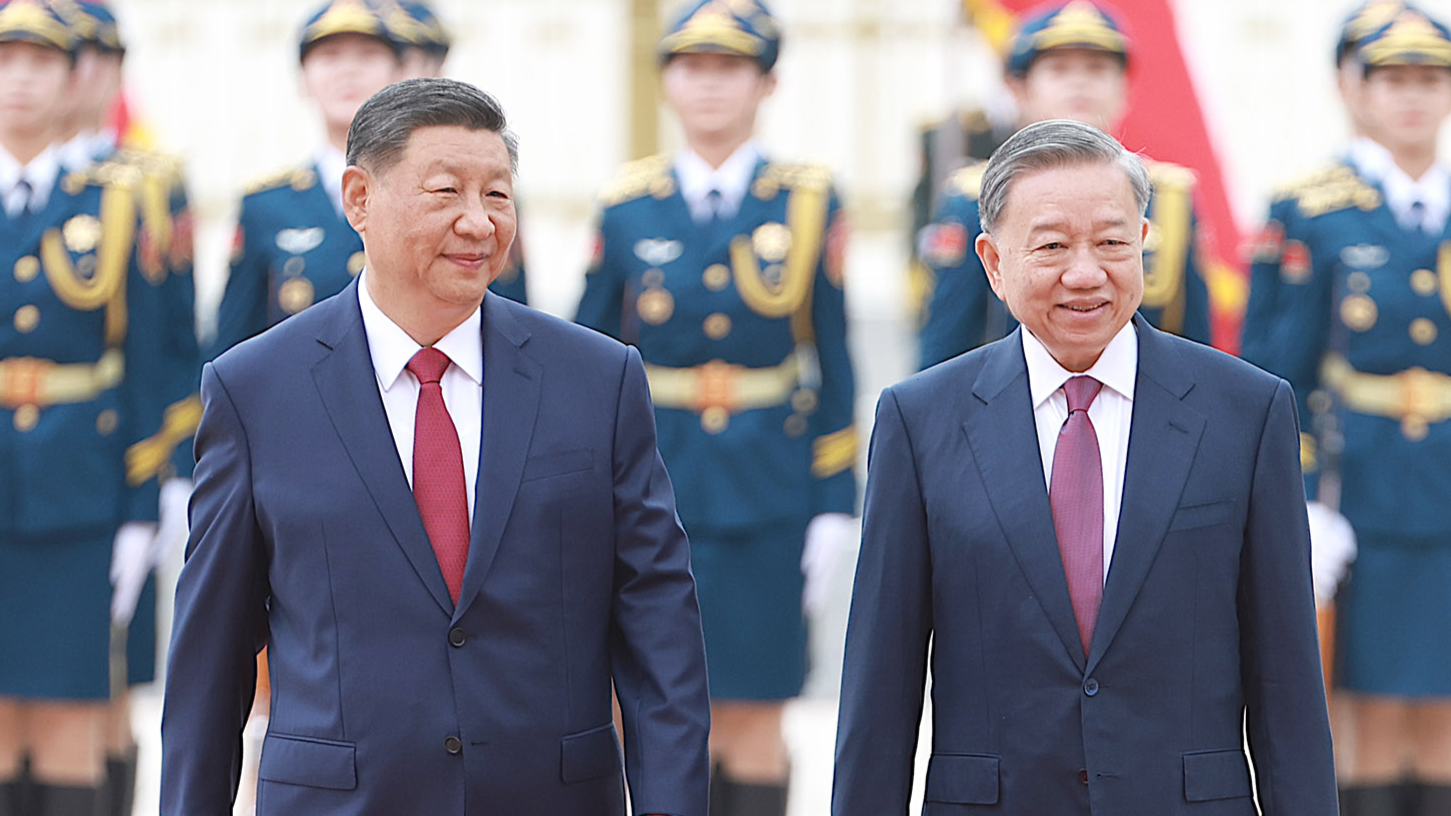
By stressing he would like to establish a good working relationship as well as personal friendship with his visiting Vietnamese counterpart during their meeting in Beijing on Monday, President Xi Jinping expressed Beijing's hope that Vietnam will maintain the stability of its China policy.
By choosing China as the destination for his first overseas visit since he was elected general secretary of the Central Committee of the Communist Party of Vietnam on Aug 3 after the death of his predecessor Nguyen Phu Trong last month, To Lam, president of Vietnam, has indicated that Vietnam will continue to advance the road map drawn up by Beijing and Hanoi over the past decade.
READ MORE: Beijing, Hanoi vow to advance traditional ties
Economic and trade cooperation is high on the agenda of Lam's visit as the two countries are seeking to expand their common interests and inject new vitality into bilateral ties. In describing the building of a China-Vietnam community with a shared future as having strategic significance for a new era of bilateral ties in his meeting with Lam, Xi reassured his Vietnamese guest that the Chinese side will actively do its part to help translate the promising vision agreed by the two sides into reality as long as Vietnam meets China halfway. Lam's visit can also be regarded as a message to those external forces that are trying to drive a wedge between the two neighbors for their own narrow geopolitical ends that the transition of the CPV leadership does not mean a change in Sino-Vietnamese relations featuring "camaraderie plus brotherhood".
Beijing has made it clear that it does not require Vietnam to choose sides, but simply to uphold its strategic autonomy. As long as Vietnam works together with regional countries, including China, to safeguard regional peace and stability and uphold true multilateralism and international fairness and justice, something Hanoi has reiterated is its long-term stance, China is willing to help its neighbor become prosperous.
That is also a commitment the whole region reaffirmed at a meeting of the foreign ministers of six countries, including China and Vietnam, under the Lancang-Mekong cooperation framework in Thailand on Friday, which produced a detailed to-do list for cooperation. Notably, China welcomes its neighbors to deepen cooperation in not only traditional sectors including trade and agriculture, but also high-tech research and development, aerospace, the digital economy and green development, demonstrating its earnestness to help the other countries upgrade their economy, industries and technologies.
ALSO READ: Neighbors' adhering to socialist path is right way to build community with a shared future
It is meaningful that Xi told Lam that China is ready to accelerate the "hard connectivity" of railway, expressway and port infrastructure, enhance the "soft connectivity" of smart customs, and jointly build secure and stable industry and supply chains between the two neighbors, which will serve as effective bonds to strengthen the cohesion of the China-Vietnam community with a shared future. While some are building walls fending off their neighbors, China is building ways and bridges.
All these, along with the varied cooperation agreements signed during Lam's visit, indicate that while some external forces are trying to downgrade countries in the region to proxies in their geopolitical game, China is doing all it can to help bolster their competitiveness in the global industry and supply chains so the region can continue to be a dynamic economic powerhouse, which will help them exercise their autonomy.
Even before his ongoing three-day visit to China starting on Sunday, Lam had assured Xi's special envoy attending Trong's funeral in Hanoi last month that China is the only country that meets all the priority factors of Vietnam's foreign policy, a message he reiterated during his first stop in Guangzhou. With the building of a China-Vietnam community with a shared future that carries strategic significance, the two neighbors are set to make greater contributions to regional development.


